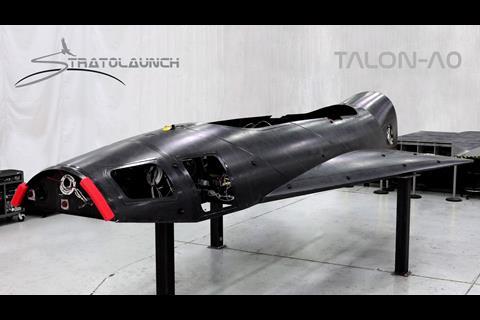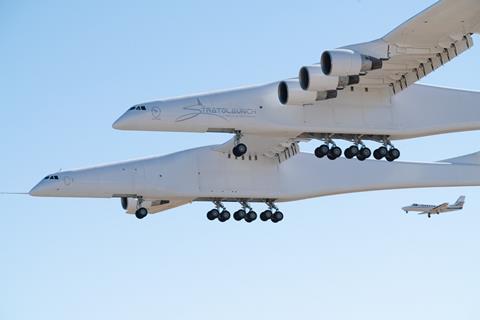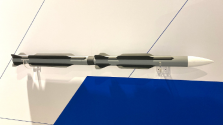A strategic opportunity for China IF it has a competitive SSN design and can get the Bohai Shipyard submarine halls working at near full capacity.From:
The article stages a traditional narrative for rationalizing expenditures but some interesting information can be found between the lines, especially in the context of the ongoing debate on Capitol Hill about the sustainability and capability of current industrial base.
"The Navy bought its first SSBN in fiscal 2021, will buy the second in FY24 and will buy the remaining 10 at a one-a-year pace from FY26 through FY35."
"The Ohio-class has already gone through life-extension work to bring the hulls to 42 years of operations, but last fall, program officials revealed they may look at each hull to see which are likely to be able to serve for a couple extra years, as a buffer to any future delays the Columbia program may face."
"Navy is doing feasibility studies now, laying out what would have to happen to each boat if the service were to decide to extend their lives. He made clear it’s not the official engineering assessment, which would be the final determination on whether the sub can safely continue operating longer than planned, but based on this early work, Stefany said at least a couple SSBNs could be extended if Columbia one-a-year construction proves to be too much of a challenge."
Already with Ohio extension the planned delivery of Columbias will cause a drop in SSBN force to minimum of 10 ships allowed by STRATCOM in the entire period of 2030-2040. If Columbia program encounters any delay the service of some Ohios will have to be further extended just to maintain that minimum capacity.
From the article - illustration of Sea Based Strategic Deterrent timeline:
View attachment 77712
Furthermore the program already consumes majority of additional funding for new construction:
"The new PEO SSBN will include a Columbia program office, an in-service SSBN and SSGN support office, and a submarine industrial base program office. The Navy previously had a complex arrangement among PEO Columbia, PEO Subs and PEO Carriers to coordinate on matters related to the nuclear ship industrial base, which is strained right now to keep up with adding in Columbia, continuing the Ford class and sustaining or increasing the rate of Virginia-class SSNs. Rather than continue to manage by committee, a single person — Matt Sermon, who will also serve as executive director of PEO SSBN — will be the lead on industrial base issues.
Stefany said Sermon will continue to coordinate with PEO SSN and PEO Carriers. However, when Congress has added money into the budget to strengthen the submarine industrial base, that money has gone in under the Columbia funding line, making it an easy decision to put this responsibility under PEO SSBN."
The Virginia program has also continuing problems with maintenance and increasing production capacity as required:
"[...] Shipbuilders General Dynamics Electric Boat and Huntington Ingalls Industries’ Newport News Shipbuilding have delivered the Block IV Virginias behind schedule as they struggle to get up to a two-boats-a-year construction rate, while maintainers on the in-service boats have cannibalized other subs and the new construction line to get the parts they need to return SSNs to operations.
Among the biggest challenges is that the Navy assumed certain parts of the sub would last the life of the boat. However, as in-service Virginias arrived for maintenance, the Navy found it had to replace parts that weren’t supposed to need replacing. Since there aren’t spares available, maintainers have been taking the parts from the construction line, slowing down production at Electric Boat and Newport News Shipbuilding and contributing to those new boats being late, Stefany said."
The last part can be an exaggeration as INSURV (Board of Inspection and Survey, Department of Navy cell) reported high scores (85 and above) for the submarine fleet sustained across the period of 2014-2019, in contrast to the slowly deteriorating scores for the surface fleet. I am however willing to believe that this might have been achieved at a high cost considering the bottlenecks in spares and labour. How much it will impact future production, considering the additional resources are most likely being diverted to Columbia program as a priority, remains to be seen.
INSURV scores for submarines, surface fleet and carriers for reference
View attachment 77717
View attachment 77718
View attachment 77719
You are using an out of date browser. It may not display this or other websites correctly.
You should upgrade or use an alternative browser.
You should upgrade or use an alternative browser.
US Military News, Reports, Data, etc.
- Thread starter tphuang
- Start date
Stratolaunch wraps critical design review, aims for hypersonic flight test in 2022
By Garrett Reim 1 October 2021
Stratolaunch, owner of the world’s largest aircraft, has completed a critical design review of its Talon-A hypersonic test vehicle.
The Mojave, California-based company plans to use its massive, six-engined Roc aircraft as a launch platform for hypersonic vehicles and missiles. The aircraft, which has a record-setting wingspan of 117m (385ft), was developed by Scaled Composites to air-launch rockets into orbit.



Stratolaunch says on 27 September that the competition of the critical design review puts it on track to flight test its Talon hypersonic vehicles in 2022. The high-speed unmanned air vehicles (UAV) would then enter service with potential government and commercial customers by 2023.
“The Talon-A vehicles are rocket-propelled, autonomous, reusable testbeds carrying customisable payloads at speeds above Mach 5,” says Stratolaunch. “This capability enables routine access to the hypersonic flight environment, which is critical for scientific research, technological development, and component demonstration.”
The US Department of Defense is in a hypersonic missile arms race with China and Russia. It is investing billions of dollars into developing different types of hypersonic missiles. Hypersonic is defined as anything flying faster than M5.
Yet, the Pentagon has a limited number of aircraft that are large enough and have enough lifting capacity to air-launch hypersonic missiles for test flights. The US Air Force often uses its Boeing B-52 Stratofortress, but that heavy bomber has other missions it must fulfil, limiting its availability. In light of the flight testing bottleneck, Stratolaunch wants to be a launch test-platform for hire.
The company says it has been building its Talon-A test vehicles in parallel with its critical design review. The airframe of the initial test vehicle, the Talon-A0, is complete and Stratolaunch is working to install subsystems in the UAV before functional testing in early 2022.
“It will serve as a pathfinder for mission operations, including a flight test demonstrating safe release and separation from the carrier aircraft,” says the firm.
A second vehicle, dubbed Talon-A1, is being assembled and will be the company’s first hypersonic-capable UAV.
Talon-A is 8.5m long, with a wingspan of 3.4m. It has a launch weight of about 2,720kg (6,000lb). The UAV is intended to fly up to M6 and then glide autonomously back to earth where it would land on a conventional runway. The company says it will also be capable of autonomous take-off from a conventional runway using its rocket engine.
Stratolaunch says the Talon-A will have instruments integrated into its airframe to obtain aerothermal and performance data. It will also be able to carry experimental payloads.
The behemoth Roc has only flown twice since 2019, but Stratolaunch plans to conduct additional flight tests in the coming months. After those flights, the company plans to install pylons under its centre wing for carrying three Talon-A vehicles at once.
“This unique capability enables multiple hypersonic flight opportunities on a single day or the near-simultaneous launch of three Talon vehicles, which may support specific operational scenarios,” says Stratolaunch.
It cost 4 million a piece. Why should maneuverability be a concern? However, rate of production and getting these assets to the war theatre might be a concern. It is RATO launched so even non military ships can be made to launch them in the future.
I like the Kratos Valkyrie. Even though the distributed warfare approach of US Navy by way of its surface fleet may falter, it's Navy Air Wing shows promise of disruption.
It was only prudent that China develop a system similar to it.
Quite a significant hit apparently, very close to catastrophic. In quite a sensitive part of the world.
US ships and boats hitting stuff, a timeless classic.
The rumour mill is already blaming Chinese autonomous subs,
Pay attention Australia, you might want to install extra seat belt on yours.
the sea wolf is supposed to be darker than a black hole, you can't find it by any means, and the South China Sea is deep, it can't touch the bottom, it was not supposed to surface, then what happened?Quite a significant hit apparently, very close to catastrophic. In quite a sensitive part of the world.
The rumour mill is already blaming Chinese autonomous subs,
Collision was definitely with a UUAV, anti-mine op gone wrong, or another submarine whether Chinese (PRC or ROC lol), Japanese, Russian, NATO, or American (unlikely).
Either that or the entire thing is a cover up or fabrication. If the collision with something happened in the SCS, it cannot possibly be with anything else. There are no giant random rocks 50m deep in the water, it doesn't get close to the bottom or risk getting far into littoral waters and the surfaces there, it isn't with a whale since a collision with a whale even if possible, would do no real damage to the submarine and definitely not injure any crew. Collision that injures crew would have to be extremely significant and against a very heavy thing. Possible small explosion from a UUAV or mine? They aren't giving any details and the whole thing could also be a fabrication.
Either that or the entire thing is a cover up or fabrication. If the collision with something happened in the SCS, it cannot possibly be with anything else. There are no giant random rocks 50m deep in the water, it doesn't get close to the bottom or risk getting far into littoral waters and the surfaces there, it isn't with a whale since a collision with a whale even if possible, would do no real damage to the submarine and definitely not injure any crew. Collision that injures crew would have to be extremely significant and against a very heavy thing. Possible small explosion from a UUAV or mine? They aren't giving any details and the whole thing could also be a fabrication.

